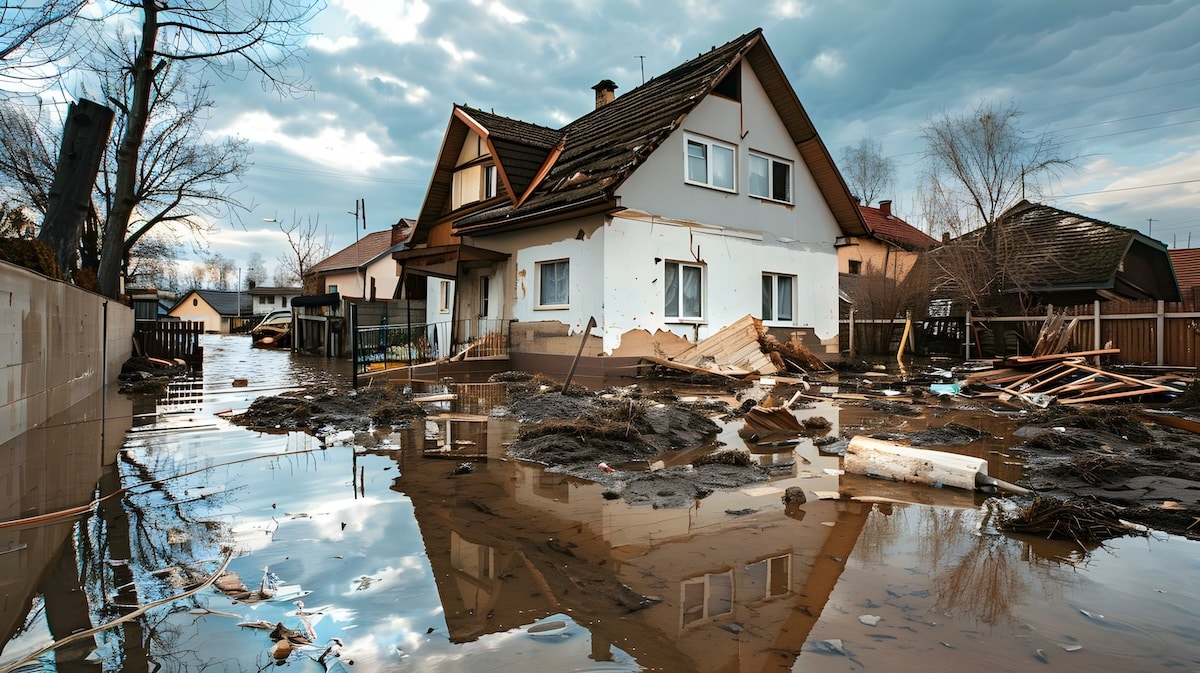
The unpredictability of summer weather in Colorado continues to assert itself as meteorologists forecast another series of thunderstorms set to sweep across the state. The announcement comes with a stern warning: Colorado weather: More thunderstorms on the way, flood watch for southern I-25 corridor. This development has prompted a heightened state of vigilance among residents, emergency services, and local authorities.
Anticipated Storms and Their Impact
Colorado is no stranger to dramatic weather patterns, especially during the summer months when the clash between warm and cool air masses often spawns severe thunderstorms. This week, the forecast indicates a series of these storms making their way through the state, with particular concern for the southern I-25 corridor. This region, stretching from Pueblo to Trinidad, is under a flood watch due to the anticipated heavy rainfall.
The storms are expected to bring with them a mix of hazards, including intense rainfall, hail, and strong winds. Colorado weather: More thunderstorms on the way, flood watch for southern I-25 corridor signifies that the potential for flash flooding is particularly high, exacerbated by already saturated ground from previous storms. Residents in low-lying areas and near waterways are advised to stay alert and be prepared for sudden flooding.
Meteorological Conditions
The current weather pattern is influenced by a combination of monsoonal moisture and an upper-level disturbance moving across the region. This confluence creates an environment ripe for thunderstorm development. Meteorologists from the National Weather Service have highlighted that the moisture levels in the atmosphere are above average, increasing the likelihood of heavy downpours.
Colorado weather: More thunderstorms on the way, flood watch for southern I-25 corridor also reflects the broader climate trends affecting the region. The oscillation between dry spells and intense precipitation is becoming more pronounced, making it challenging for communities to adapt to the rapid changes.
Preparedness and Safety Measures
With the flood watch in effect, authorities are urging residents to take necessary precautions. This includes staying informed about weather updates, having an emergency plan in place, and avoiding travel through flood-prone areas during the height of the storms. For those living in the southern I-25 corridor, Colorado weather: More thunderstorms on the way, flood watch for southern I-25 corridor means a need for heightened readiness.
Local emergency services have been mobilized to respond quickly to any incidents of flooding. Sandbags and other flood prevention materials are being distributed, and evacuation routes are being reviewed to ensure they are clear and accessible. Additionally, public service announcements are being made to educate the populace on the dangers of flash floods and the importance of heeding evacuation orders.
Economic and Environmental Implications
The economic impact of these storms can be significant. Flooding can cause extensive damage to infrastructure, homes, and businesses. For the agricultural sector in southern Colorado, which is already contending with a challenging growing season, the excessive rainfall can lead to crop damage and soil erosion.
Environmentally, Colorado weather: More thunderstorms on the way, flood watch for southern I-25 corridor poses a risk to local ecosystems. Rapid influxes of water can lead to habitat disruption for wildlife and can introduce pollutants into rivers and streams, affecting water quality. The state’s natural landscape, while resilient, faces stress from these extreme weather events, prompting a need for comprehensive water management and conservation strategies.
Community Resilience and Response
Despite the challenges, Colorado communities are known for their resilience. Local governments, nonprofits, and community groups are working together to provide support and resources to those affected by the storms. This collaborative effort ensures that vulnerable populations, such as the elderly and those with limited mobility, receive the assistance they need.
In the spirit of community, neighbors are helping each other to prepare for the potential flooding. From assisting with sandbagging efforts to offering shelter to those in flood-prone areas, the sense of solidarity is palpable. Colorado weather: More thunderstorms on the way, flood watch for southern I-25 corridor is not just a warning; it is a call to action for the community to come together.
Long-Term Considerations
As the frequency and intensity of these weather events increase, long-term strategies for flood management and climate adaptation become crucial. Urban planning must incorporate flood-resistant infrastructure, and rural areas need enhanced water management systems to cope with the fluctuations in weather patterns.
State and local governments are investing in technologies and practices to better predict and manage these weather events. Improved forecasting models, real-time data collection, and advanced warning systems are all part of the effort to mitigate the impact of severe weather. Colorado weather: More thunderstorms on the way, flood watch for southern I-25 corridor underscores the importance of these initiatives.
Personal Stories and Community Efforts
Amidst the preparations and precautions, personal stories of resilience and community spirit continue to emerge. For instance, a family in Trinidad shared how they have fortified their home against floods over the years, learning from past experiences and continuously improving their preparedness measures. Their story is a testament to the adaptability and foresight of many residents in the region.
Volunteers play a critical role during these times. Community centers and local churches are opening their doors as temporary shelters, providing not just a safe place to stay but also food, water, and emotional support. These efforts highlight the compassion and unity that define Colorado’s response to natural disasters.
Conclusion
As Colorado weather: More thunderstorms on the way, flood watch for southern I-25 corridor becomes the focal point of attention, the state braces itself for another test of its resilience. The storms bring challenges, but they also bring out the best in community cooperation and preparedness. With vigilant monitoring, proactive measures, and a united community effort, Colorado is poised to weather the storms and emerge stronger on the other side.
The lessons learned from these weather events will continue to shape the state’s approach to managing natural disasters, ensuring that communities are better prepared and more resilient in the face of future challenges. As the clouds gather and the rain begins to fall, the people of Colorado stand ready, united by their resolve and fortified by their shared experiences.







